| Listing 1 - 10 of 28 | << page >> |
Sort by
|
Book
ISBN: 0521245214 Year: 1983 Publisher: Cambridge Cambridge University press
Abstract | Keywords | Export | Availability | Bookmark
 Loading...
Loading...Choose an application
- Reference Manager
- EndNote
- RefWorks (Direct export to RefWorks)
Book
ISBN: 0471279633 9780471279631 Year: 1982 Publisher: Chichester: Wiley,
Abstract | Keywords | Export | Availability | Bookmark
 Loading...
Loading...Choose an application
- Reference Manager
- EndNote
- RefWorks (Direct export to RefWorks)
X-ray sources, Galactic --- X-ray astronomy --- Congresses --- Congresses. --- X-ray sources, Galactic - Congresses --- X-ray astronomy - Congresses
Book
ISBN: 1400883806 Year: 2016 Publisher: Princeton, NJ : Princeton University Press,
Abstract | Keywords | Export | Availability | Bookmark
 Loading...
Loading...Choose an application
- Reference Manager
- EndNote
- RefWorks (Direct export to RefWorks)
The Extravagant Universe tells the story of a remarkable adventure of scientific discovery. One of the world's leading astronomers, Robert Kirshner, takes readers inside a lively research team on the quest that led them to an extraordinary cosmological discovery: the expansion of the universe is accelerating under the influence of a dark energy that makes space itself expand. In addition to sharing the story of this exciting discovery, Kirshner also brings the science up-to-date in a new epilogue. He explains how the idea of an accelerating universe--once a daring interpretation of sketchy data--is now the standard assumption in cosmology today. This measurement of dark energy--a quality of space itself that causes cosmic acceleration--points to a gaping hole in our understanding of fundamental physics. In 1917, Einstein proposed the "cosmological constant" to explain a static universe. When observations proved that the universe was expanding, he cast this early form of dark energy aside. But recent observations described first-hand in this book show that the cosmological constant--or something just like it--dominates the universe's mass and energy budget and determines its fate and shape. Warned by Einstein's blunder, and contradicted by the initial results of a competing research team, Kirshner and his colleagues were reluctant to accept their own result. But, convinced by evidence built on their hard-earned understanding of exploding stars, they announced their conclusion that the universe is accelerating in February 1998. Other lines of inquiry and parallel supernova research now support a new synthesis of a cosmos dominated by dark energy but also containing several forms of dark matter. We live in an extravagant universe with a surprising number of essential ingredients: the real universe we measure is not the simplest one we could imagine.
Supernovae. --- Dark energy (Astronomy) --- Astrophysics --- Force and energy --- Supernovas --- Cataclysmic variable stars --- X-ray sources, Galactic
Book
ISBN: 3540543546 Year: 1991 Publisher: Berlin : Springer,
Abstract | Keywords | Export | Availability | Bookmark
 Loading...
Loading...Choose an application
- Reference Manager
- EndNote
- RefWorks (Direct export to RefWorks)
Astrophysics --- Iron --- X-ray sources, Galactic --- X-ray spectroscopy --- Congresses. --- Spectra
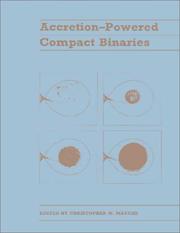
ISBN: 0521402123 Year: 1990 Publisher: Cambridge Cambridge University press
Abstract | Keywords | Export | Availability | Bookmark
 Loading...
Loading...Choose an application
- Reference Manager
- EndNote
- RefWorks (Direct export to RefWorks)
Accretion (Astrophysics) --- Cataclysmic variable stars --- X-ray binaries --- X-ray sources, Galactic --- Congresses
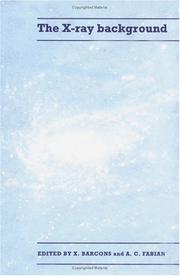
ISBN: 0521416515 9780521416511 Year: 1992 Publisher: Cambridge: Cambridge university press,
Abstract | Keywords | Export | Availability | Bookmark
 Loading...
Loading...Choose an application
- Reference Manager
- EndNote
- RefWorks (Direct export to RefWorks)
Counter The book reviews our current observational knowledge of the background radiation of the X-ray in the universe. The most relevant features of the X-ray background, discovered thirty years ago, are covered in detail. The contributions of the most recent space missions, including Ginga, Rosat, and the Astro-1 Shuttle flight are included. The topics covered embrace the spectrum of the radiation, isotropy on all angular scales and possible sources, such as active galactic nuclei and clusters of galaxies.
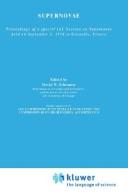
ISBN: 9027708061 9401012318 9401012296 Year: 1977 Publisher: Dordrecht Boston, MA : D. Reidel,
Abstract | Keywords | Export | Availability | Bookmark
 Loading...
Loading...Choose an application
- Reference Manager
- EndNote
- RefWorks (Direct export to RefWorks)
52 --- Supernovae --- -Supernovas --- Cataclysmic variable stars --- X-ray sources, Galactic --- Astronomie. Astrofysica. Ruimteonderzoek. Geodesie --- Congresses --- Congresses. --- -Astronomie. Astrofysica. Ruimteonderzoek. Geodesie
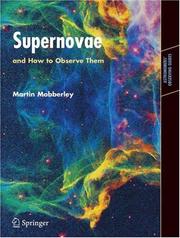
ISBN: 1280945079 9786610945078 0387462694 0387352570 Year: 2007 Publisher: New York : Springer,
Abstract | Keywords | Export | Availability | Bookmark
 Loading...
Loading...Choose an application
- Reference Manager
- EndNote
- RefWorks (Direct export to RefWorks)
Supernovae mark the deaths of massive stars or of white dwarfs in binary systems, and are unbelievably violent events. Even when they occur in galaxies millions of light years away they can be within the reach of amateur astronomers’ telescopes. More than 400 supernovae have already been discovered by amateurs. Supernovae and How to Observe Them is a mine of information for all levels of amateur astronomer, from relative beginners to experienced observers. Whether you are interested in the supernova physics, observing supernovae and supernova remnants, measuring their spectra or even discovering new supernovae yourself, this book provides all the information you need.
Supernovae --- Supernovas --- Cataclysmic variable stars --- X-ray sources, Galactic --- Astronomy. --- Popular Science in Astronomy. --- Astronomy, Observations and Techniques. --- Observations, Astronomical. --- Astronomy—Observations. --- Astronomical observations --- Observations, Astronomical
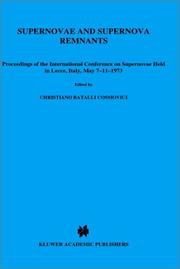
ISBN: 9027704279 9401021686 940102166X 9789027704276 Year: 1974 Volume: 45 Publisher: Dordrecht: Reidel,
Abstract | Keywords | Export | Availability | Bookmark
 Loading...
Loading...Choose an application
- Reference Manager
- EndNote
- RefWorks (Direct export to RefWorks)
Supernovae --- Supernova remnants --- Congresses --- 52 --- -Supernovas --- Cataclysmic variable stars --- X-ray sources, Galactic --- Remnants, Supernova --- Astronomie. Astrofysica. Ruimteonderzoek. Geodesie --- Supernova remnants. --- Congresses. --- -Astronomie. Astrofysica. Ruimteonderzoek. Geodesie --- Supernovae - Congresses
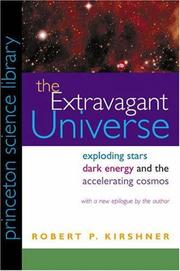
ISBN: 0691058628 9780691058627 Year: 2002 Publisher: Princeton : Princeton University Press,
Abstract | Keywords | Export | Availability | Bookmark
 Loading...
Loading...Choose an application
- Reference Manager
- EndNote
- RefWorks (Direct export to RefWorks)
524.8 --- Supernovae --- Dark energy (Astronomy) --- Astrophysics --- Force and energy --- Supernovas --- Cataclysmic variable stars --- X-ray sources, Galactic --- The Universe. Metagalaxy. Cosmology --- 524.8 The Universe. Metagalaxy. Cosmology
| Listing 1 - 10 of 28 | << page >> |
Sort by
|

 Search
Search Feedback
Feedback About UniCat
About UniCat  Help
Help News
News